Stop 7 on the Carretera Austral: Caleta Tortel
Population: 320
If you’ve been following our Carretera Austral posts, you may notice that we skipped stop 6 and went straight to 7. We ended up back in stop 6, Cochrane, for a longer stay after stop 7 so figured it would make more sense to include it in the next post.
Our bus ride to Caleta Tortel was bumpy and unpaved, but of course scenic, and the furthest south we would travel on the Carretera Austral. Surprisingly, Caleta Tortel did not have any road linking to the Carretera until 2003, just a little more than 10 years ago. Before that, the town was only accessible by horseback, boat or small plane, all of which were limited by weather conditions. And the road ends at a parking lot above town, so except for the few homes and a school near the parking lot, the rest of Tortel can only be explored on foot.
As you’ll see in the photos, the small town of Caleta Tortel is built around a bay, directly into a relatively steep rock wall face. Due to the steepness, the settlers of Tortel decided to connect the various homes via wooden walkways instead of by road. There is only one main walkway, the Pasarela Costanera, which is located along the coastline, with a number of arterial walkways acting as long driveways, leading uphill to smaller clusters of homes. It takes roughly 40 minutes to walk the full length of the Pasarela Costanera, but you can spend hours and hours, like we did, exploring the offshoot walkways to find hidden homes and take in sweeping views of the bay below.
The town was settled in the early 1950s as part of the cyprus wood timber industry. The timber was conveniently stored (and guarded) on shore before being shipped to its end destination, which eventually lead to permanent homes to support the industry. All the walkways in town, and almost all the houses, are built of local cyprus wood. And the town plazas and playgrounds are just wooden platforms built over the water with benches (wooden of course) and playground equipment built on top of them. Even greenhouses and gardens are built of cyprus wood, raised above the sea with the soil added, basically oversized garden boxes.
There isn’t a whole lot to do in Tortel (no Internet or cell service), except to unplug and truly soak in the serenity and culture of this incredibly unique and isolated place. The serenity was even more accentuated since we arrived before the busy tourist season. We were the only people staying at our hospedaje and the few times we went out to eat, we were the only ones eating in the restaurants. It was great for striking up some conversations with the locals to learn more about life in Tortel, and being able to more keenly observe the people who live in Tortel. Being such a small town, everyone knows each other and everyone says hello when passing on the walkways, whether as a “buenos dias” or “buenos tardes,” even to us gringos.
We had a lot of downtime in Tortel, and we were lucky enough to get to know the señora of our hospedaje and 2 of her 8 sons, Eduardo “Yaya” and Delphin, during our visit. After a few days, Señora Berta warmed up to us, and told us how she came to live in Caleta Tortel. She was actually a part of one of the first 9 families to settle in Tortel, arriving at a young age to help care for her ailing grandmother who was camping there and working in the timber industry. From what we could understand through our conversations with her (she spoke a different dialect of Spanish that was very hard to understand), life was extremely difficult back then, with supplies from outside the town coming very infrequently, only radio communications, and scarce hot water to warm them during the chilly winters. Yaya and Delphin, who we should note spoke regular Spanish, were quite the characters, and well known around town for their local activism and poetry. By the end of our visit we became pretty comfortable hanging around the house with them, dining on the Señora’s culinary creations (which she managed to vary even though the grocery selections were limited), and watching reruns of How I Met Your Mother in English with Spanish subtitles. There are a few photos of Señora Berta and Delphin below, and even though Señora Berta looks very serious, she was actually posing for the camera.
What struck us most during our time in Tortel was how the locals epitomized the laid back “tranquilo” attitude we had been coming across on the Carretera. Even though tourism is an essential income source in Tortel, the locals didn’t push excursions or souvenirs. In fact, on one day, we wandered the docks with 4 Chilean tourists with money in hand, and were hard pressed to find anyone who wanted to take us on a boat ride, which eventually took us about an hour and a half to arrange. Another good example of the “tranquilo” attitude came from a few Tortelans lamenting to us about how big city Chilean tourists always want the quick Western style service, especially as far as restaurant food is concerned, with food and check being promptly provided per Western norms. But that’s not the way in Tortel. Seemingly half of the population works in the tourism industry which is only really active from November to March, with presumably very little to do the remaining months of the year. And from what we saw in people’s homes and places of business, there isn’t a ton of materialism or desire for expensive items, which would otherwise encourage consumerism which, in turn, would otherwise encourage working more shrewdly, and longer and harder hours. It makes sense considering until 2003 they were physically isolated from everywhere else in Chile, and even now it takes decent effort to get to the nearest town with shopping. So long as enough money is available for food, clothing, maintenance of their homes and walkways, and of course cigarettes and satellite TV (DirecTV is making a fortune in Chile), they are able to work less, take day to day activities a little more slowly and overall exemplify the “tranquilo” lifestyle of the Carretera. From our perspective, I can’t say there weren’t a few occasions where the service was painfully slow for our desires, or when we craved a few more food options, but we understood that was their culture, and we did our best to accept and embrace it.
Other highlights…
- We took a beautiful hike along the top ridge of the mountain the town is built on, including a ton of puddle jumping on our way back down trying to avoid wet socks.
- After trying to explain Lindsey’s vegetarian and gluten free-ness to Señora Berta she served up a double whammy made especially for Lindsey. It was a delicious soup that Lindsey completely finished, only to find out afterward that it was cream of chicken with semolina wheat.
- We took a boat trip to Isla de Los Muertos, a small island on the Baker River and the site of a mysterious mass death of timber workers camped out on the island in 1905. The ecology of the island is interesting as well, as it’s in a river delta that connects to the ocean. At the point where we crossed from salt water to fresh water we were able to see a line where the water colors and clarity actually looked different.
- 4 days of Internet-free, Carrereta style, tranquilo living
The town of Caleta Tortel is extremely photogenic and throughout all of our pasarela walking, we took a ton of pictures. Below are some of our favorites, for the full album on Flickr, click here.

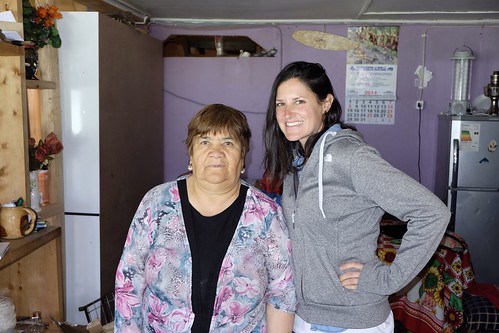

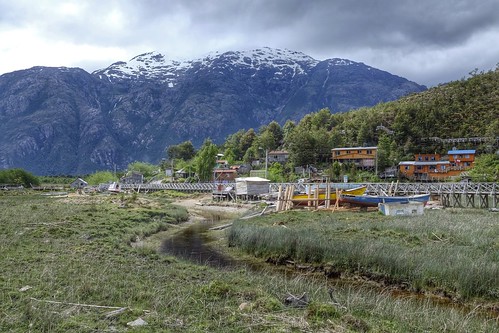
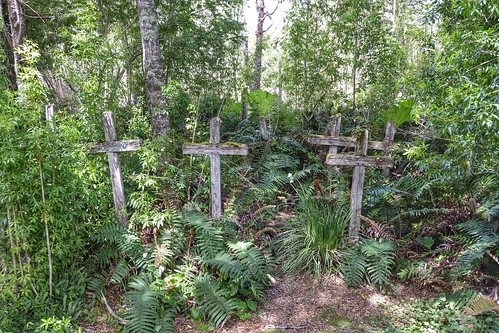
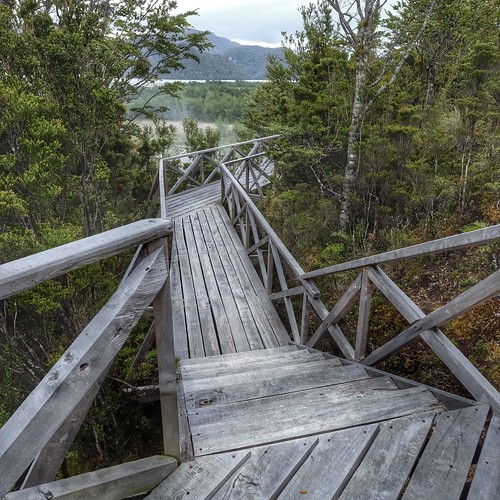
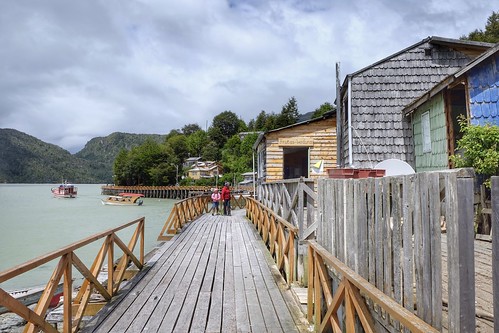
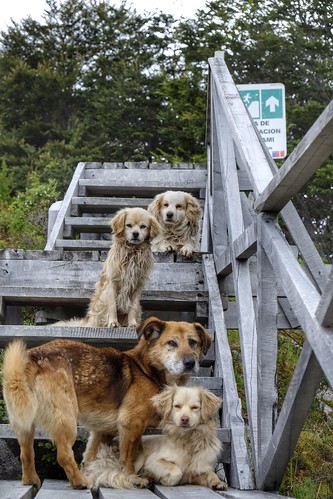





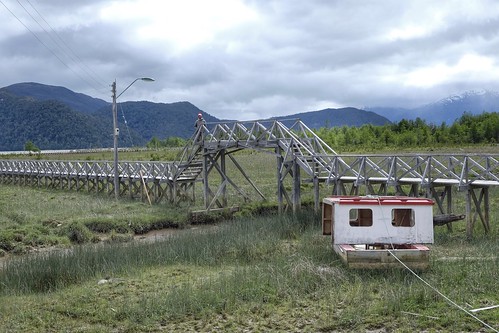


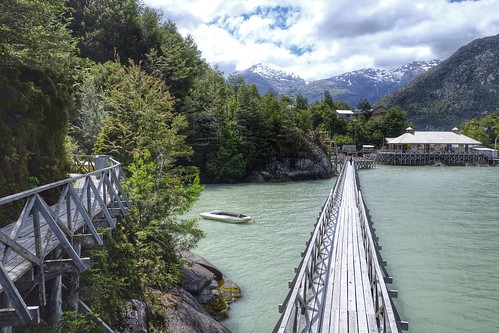
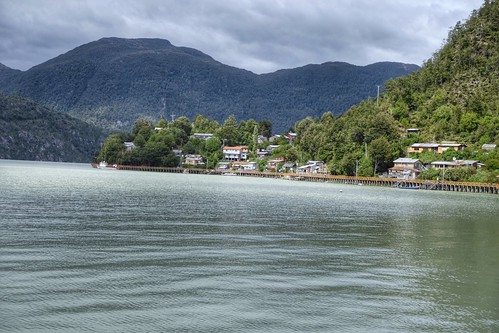
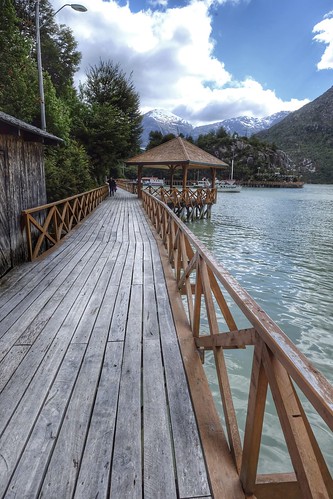
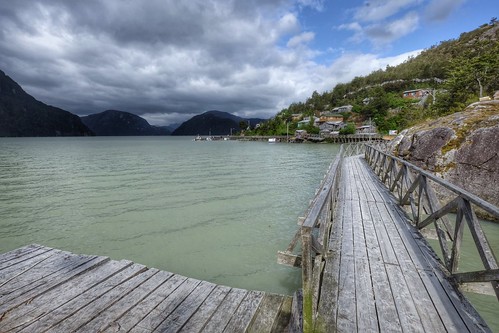
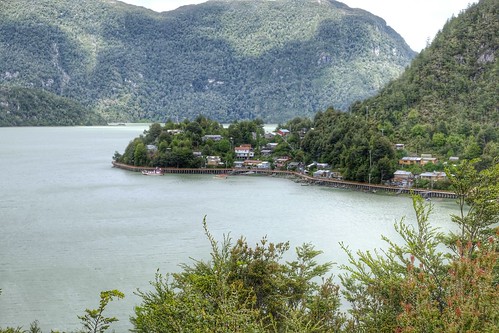
Sorry Linds but I just LOL’d about the soup. I hope you were okay afterwards!
Oh dear, a double whammy! Chicken and gluten in one. Bet that was fun after. I bet they also hadn’t heard of vegetarians until 10 years ago either.